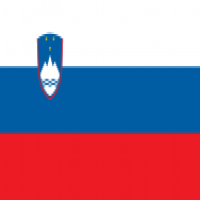Summary:
A Slovenian research institute has developed an innovative method for the recovery of rare-earth elements from magnet scraps. The method is cost-effective, energy-efficient and environmentally friendly. Partners are sought amongst the companies that recycle magnets and producers of rare-earth oxides and alloys for technical cooperation agreements and license agreement to scale up and apply the technology in their production.
Description:
Rare-earth elements (REEs) have excellent electronic, optic, catalytic, and magnetic properties, making them useful for a wide range of applications, such as catalysts, phosphors and pigments, batteries, permanent magnets, and ceramics. The global REE consumption was estimated at 119,650 metric tons in the form of rare-earth oxides (REOs) in 2016 with catalysts being the largest segment, followed by permanent magnets. Diverse methodologies for recycling Nd–Fe–B (neodymium, iron and boron) permanent magnets are currently under development which can be broadly classified into direct re-use, alloy reprocessing and raw material recovery. In conventional hydrometallurgical processes large amounts of acid, alkali and other precipitation agents are used which cannot be recycled in the whole process and consequently a considerable amount of wastewater is produced.
A Slovenian research institute has developed a novel method for recovery of the REEs from Nd–Fe–B magnet scraps, which allows the selective leaching and recovery of the REEs with high efficiency and in a more environmentally friendly and cost-effective way. The method includes anodic oxidation of the magnet scraps and precipitation of rare-earth salts. Currently the research group can produce a few dozens grams of rare-earth salts using this procedure. In order to apply the procedure on an industrial level, the method needs to be scaled up. For the scale up, large baths for anodic oxidation and engineering knowledge are needed.
The research group has a lot of experience in magnetic materials and their development, access to research infrastructure, as well as several cooperation projects with industry.
The research institute is looking for industrial partners for technical cooperation agreement and license agreement. Industrial partners should be companies that recycle magnets and magnet scraps and producers of rare-earth oxides and alloys. Expertise in electrochemistry is desired. Within the technical cooperation agreement, the partner sought shall jointly with Slovenian institute scale up the method and employ the method in their production process. If the partner successfully implements the method in his production process, he will be invited to sign a license agreement.
Type (e.g. company, R&D institution…), field of industry and Role of Partner Sought:
Type: Companies that recycle magnets and magnet scraps and producers of rare-earth oxides and alloys.
Role: The role of partner sought is to jointly scale up the method for recovery of rare-earth elements and employ the method in their production process within a technical cooperation agreement. If the partner is able to implement the method successfully, they will be invited to sign a license agreement.
Stage of Development:
Under development/lab tested
IPR Status:
Patent(s) applied for but not yet granted
Comments Regarding IPR Status:
Patent application filed at the European Patent Office which issued positive report about the patentability. Patent application based on the same invention has been filed in China.
External code:
TOSI20201202001








